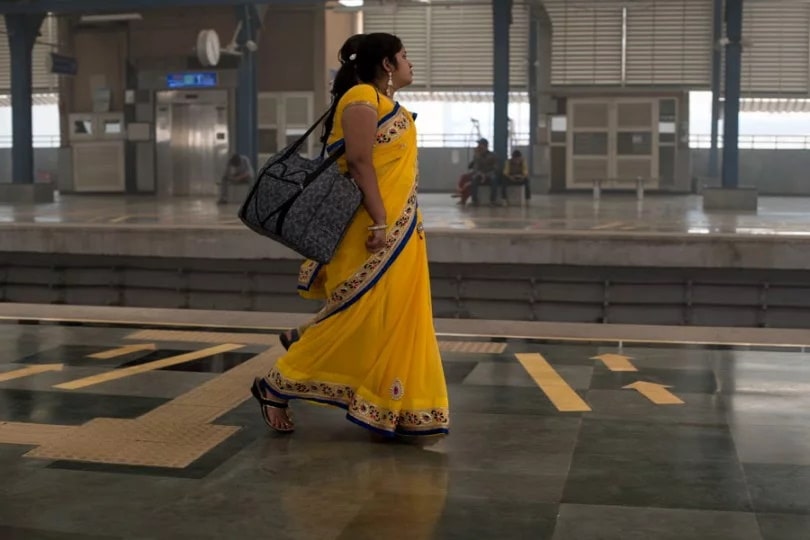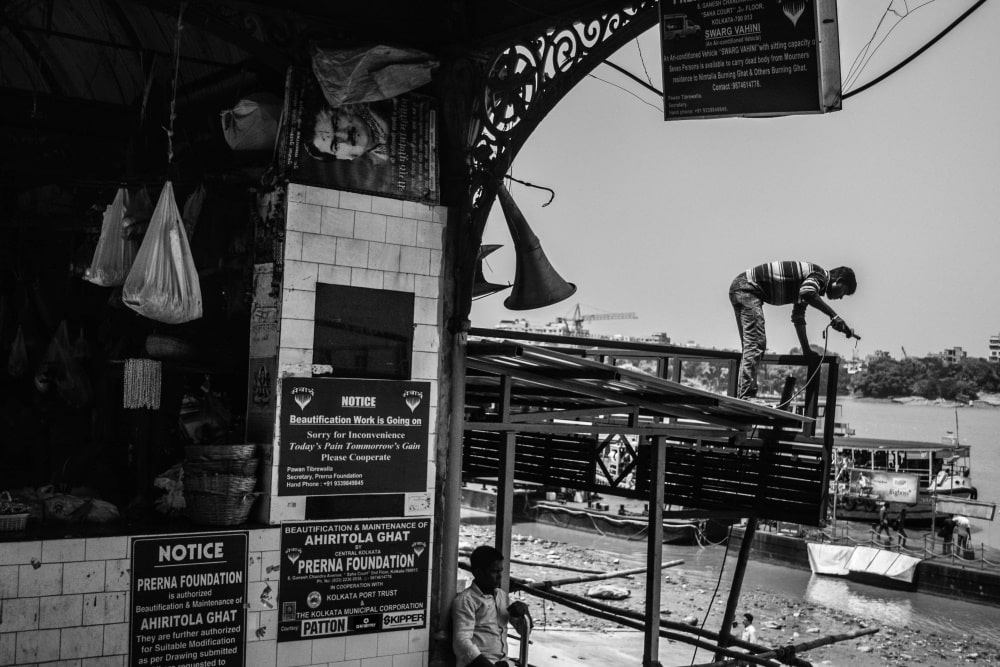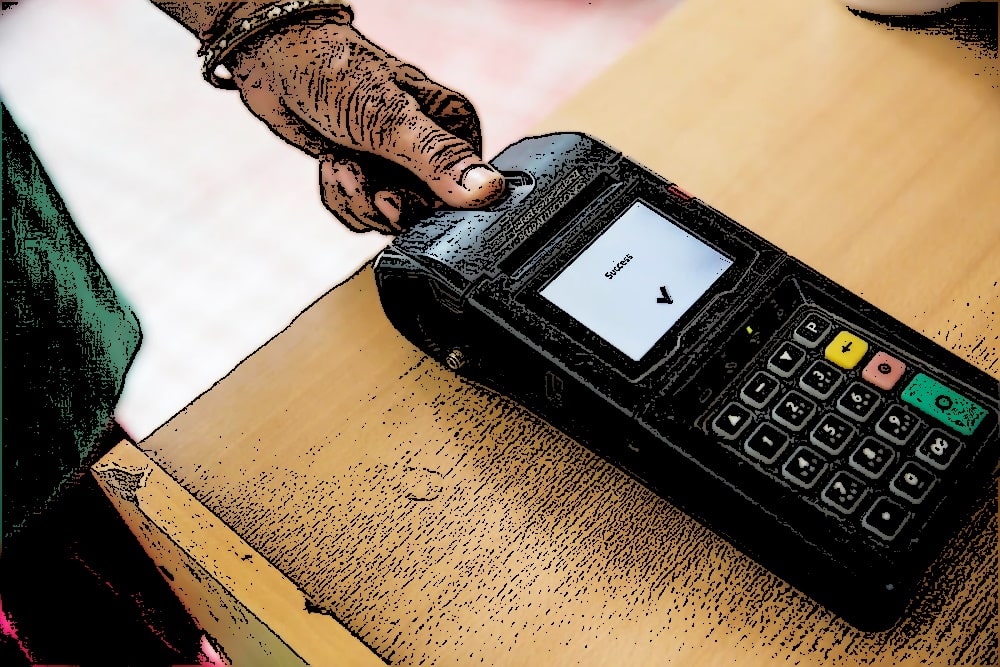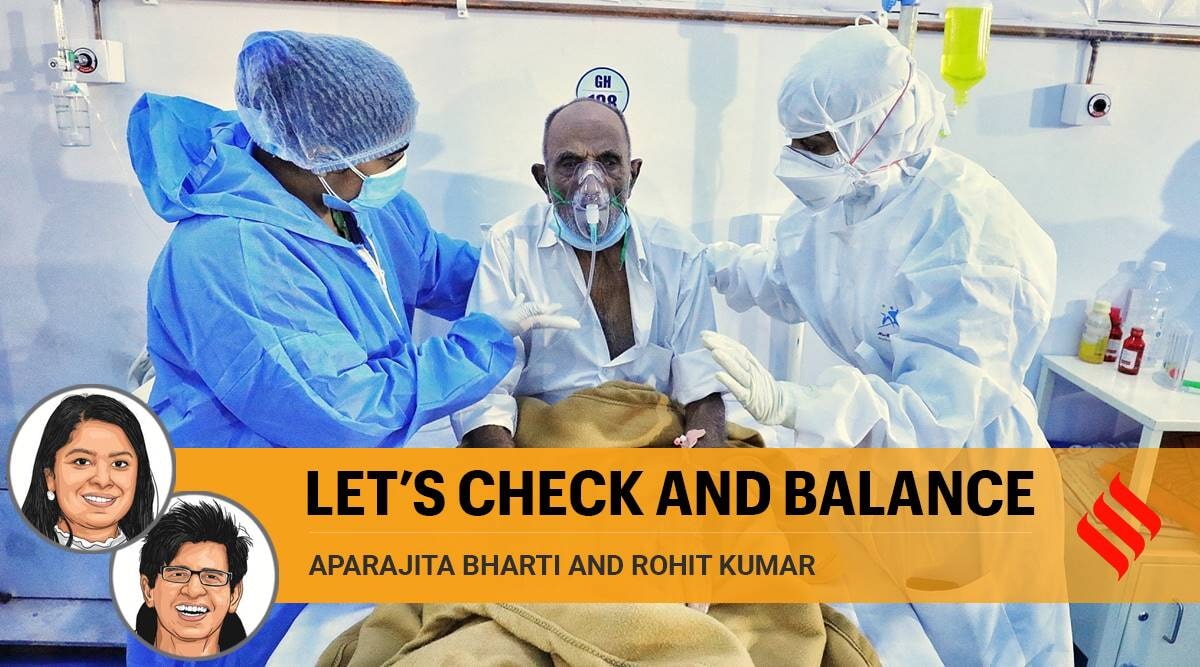Seven way to bring women back to the labour force, provide livelihood and income security, and increase women’s agency in cities
Author: Nikhil Iyer
Published: June 2, 2021 in the India Development Review
With localised restrictions in 34 states and union territories, the second wave of the coronavirus pandemic has effectively led to a national lockdown, yet again. Data from the Centre for Monitoring Indian Economy (CMIE) suggests that the urban unemployment rate neared 12 percent in the week leading up to May 9, 2021—up from 9.5 percent in the week ending April 25. In April 2021, India’s labour force participation rate fell to 39.9 percent. This is the third consecutive month for which it has fallen and is the lowest since May 2020. Experience from the past year, when the urban unemployment rate shot up to nearly 25 percent in April 2020, puts the precarious nature of urban employment into sharp focus. This is particularly so for informal workers, nearly 80 percent of whom lost their livelihoods during April and May 2020, as per the State of Working India 2021 report. The economic shock due to the second wave might further worsen the unemployment crisis.
 Women were disproportionately impacted by the economic shock of the pandemic last year, as COVID-19 guidelines prevented work in sectors like construction, beauty and wellness, domestic work, sex work, among others. Estimates suggest that nearly 70 percent of women in the working population in December 2019 had lost their jobs by April 2020, compared to 35 percent of men. The State of Working India 2021 report also states that 90 percent of men employed in late 2019 were employed in late 2020 as well, whereas the corresponding figure for women was only 50 percent. The second wave may also affect the female labour force participation rate, which was already down to seven percent in urban areas by November 2020, even as female enrolment has improved at all levels of education.
Women were disproportionately impacted by the economic shock of the pandemic last year, as COVID-19 guidelines prevented work in sectors like construction, beauty and wellness, domestic work, sex work, among others. Estimates suggest that nearly 70 percent of women in the working population in December 2019 had lost their jobs by April 2020, compared to 35 percent of men. The State of Working India 2021 report also states that 90 percent of men employed in late 2019 were employed in late 2020 as well, whereas the corresponding figure for women was only 50 percent. The second wave may also affect the female labour force participation rate, which was already down to seven percent in urban areas by November 2020, even as female enrolment has improved at all levels of education.
The livelihood insecurity of urban workers led to discussions on a centrally sponsored urban employment scheme (though these fizzled out due to an apparent financial crunch). Instead, 2020 saw three new state-level urban employment schemes (in Odisha, Himachal Pradesh, and Jharkhand) and continued budget allocations for two existing ones (in Kerala and West Bengal). Additionally, Madhya Pradesh is running a similar scheme with a limited scope, the Yuva Swabhiman Yojana, which is available to those aged 21-30 years. Tamil Nadu too is considering such a scheme, as we learn from the Finance Minister’s recent budget speech.
It is vital that such schemes be designed to bring women back to the labour force, provide livelihood and income security, and increase women’s agency. An analysis of the existing schemes provides us with seven key design principles to improve the gender-responsiveness of urban employment guarantee schemes (UEGS).
Evaluating existing urban employment schemes
Of the existing schemes, the ones in Kerala, Himachal Pradesh, and Jharkhand are structured as a guarantee with unemployment allowances, while West Bengal and Odisha offer work when available. There are three similarities in how these schemes are designed:
- First, the eligibility criteria require individuals to be willing to do unskilled manual work.
- Second, beneficiaries must reside within the jurisdiction of Urban Local Bodies (ULBs) which are the implementing agencies for the scheme.
- Third, subject to local conditions, these schemes include development works and creation of urban infrastructure assets under their ambit.
Kerala was the first state to provide 100 person-days of guaranteed wage employment through the Ayyankali Urban Employment Guarantee Scheme (AUEGS)—which was launched in 2011. The scheme guidelines require ULBs in Kerala to prioritise women, such that they comprise at least 50 percent of the beneficiaries under the scheme. As a result, over the past decade, nearly 90 percent of the job-card holders are women, many of whom are also members of neighbourhood groups under the Kudambashree Mission.
In FY 2020-21, the scheme was allocated a budget of INR 75 crore. In this period, 89,160 households, and 81,958 women received employment under the scheme. This suggests a healthy uptake for the scheme by women. For FY 2021-22, an increased amount of INR 100 crore has been earmarked by the Kerala government—an indicator of the scheme’s sustained relevance.
Odisha adopted an Urban Wage Employment Initiative in April 2020, initially up to September 2020, and later extended till March 2021. Work allocation depended on the availability of work in labour-intensive projects in 114 ULBs in the state. In doing so, Odisha was able to provide 13 lakh person-days of work by December 2020. Seeing the positive reception to the scheme, the state government decided to re-christen the scheme as the Mukhyamantri Karma Tatpara Abhiyan (MUKTA) to continue it in FY 2021-22, earmarking INR 200 crores for the scheme. Reports suggest that nearly 3.5 lakh workers have benefitted from the scheme, with women apparently making up about 40 percent of the beneficiaries. State officials are also looking to target women through urban self-help groups, informal workers associations, among others—a welcome step to leverage the networks shared by women.
In May 2020, Himachal Pradesh began the implementation of the Mukhya Mantri Shahri Aajeevika Guarantee Yojana, which guaranteed 120 days of wage employment to unskilled workers. The government also aims to impart skills training to beneficiaries, in partnership with the Deendayal Antyodaya Yojana-National Urban Livelihoods Mission (DAY-NULM), to enable workers to create other work opportunities. Though the scheme design does not explicitly prioritise women, nearly 72 percent of applications approved under the scheme are by females.
Lastly, in September 2020, the Jharkhand government initiated the Mukhyamantri Shramik Yojana, guaranteeing 100 person-days of unskilled work. This scheme has received INR 10 crores in the Budget 2021-22. The state received a significant number of migrant returnees in the summer of 2020, which spurred the government to this action. Even though the government sought to target five lakh urban poor through the scheme, the actual uptake has been less than impressive. A report from December 2020 mentions that only 474 workers out of approximately 15,000 approved applicants, had availed of work. The reasons for the muted enthusiasm are unclear, though state officials have been quoted saying that the menial nature of work on offer may be unattractive to the workers.
Designing an urban employment scheme with a gender lens
In designing a women-oriented urban employment scheme, the following principles may inform the discussion.
1. Providing quality jobs appropriate for women
The quality and nature of work should be in line with local demographics and the aspirations and skills of women. For example, the convergence of the Kerala scheme with the Pradhan Mantri Awas Yojana (Urban) has been noted to improve women’s participation in the scheme as well as better fund utilisation by ULBs. Likewise, in places where women have attained high levels of education but are unable to find gainful employment, the scheme should include skilled work in its ambit.
2. Ensuring geographical proximity to the place of residence
Jobs need to be located close to where women workers reside. Distance from the place of work often becomes a barrier for women due to concerns of safety, time spent travelling, and poor connectivity of public transport. Therefore it is important that UEGS jobs are spread across the city for women to easily access work.
3. Guaranteeing equality of wages
Similar to NREGA, an urban employment scheme should mandate equality of wages for men and women.
4. Providing flexible work arrangements
Women must be given flexibility in timings such that it allows them to juggle wage work with their unpaid work. A gig work model where payment is made on the completion of a task rather than on a per-day basis could be considered.
5. Creating an inclusive administrative system
The procedures to apply, avail work, and change personal details should be inclusive in nature. Online portal-based registration systems, as in the case of Jharkhand and Himachal Pradesh, may be exclusionary due to low internet access and digital literacy among women.
6. Building awareness via relevant platforms
Awareness measures should account for sources through which women receive information. ULBs can tap Aanganwadi networks, urban self-help groups (SHGs), slum development community associations, among others, and rely on offline modes apart from multimedia campaigns to reach out to potential beneficiaries.
7. Collecting gender-disaggregated data
It is extremely critical that gender disaggregated data be collected from the time states begin to implement their schemes. Currently, of the four states discussed above, only Kerala and Himachal Pradesh publicly publish such data, and even that is not granular in nature. Collected data should also note trends regarding choice of jobs, usual times of the year when women access these jobs, education levels of women opting for the scheme, and so on. This data can potentially inform the future design of these schemes and suggest corrective action where required.
There are other suggestions to enhance the impact of UEGS on women. States may also look to converge their schemes with the DAY-NULM, to tap into urban SHG networks, and to supply labour for community projects such as those under AMRUT, Swachh Bharat Mission Urban, among others. Economist and activist Jean Drèze, through a modification to his DUET proposal, states that women be given preference over men whenever work is available. Women can also be put in charge of placement agencies that facilitate work allocation.
Apart from these, policymakers need to reimagine Indian cities to make them more women-friendly, which has a direct correlation in their ability to work. Substantial investments need to be made in creating adequate child-care facilities to free up women’s time. Similarly, cities need to make large-scale investments in improving last mile connectivity and other provisions to improve safety and accessibility of public transport for women. These long-term initiatives need to go hand in hand with a UEGS for women to be able to access more jobs.
An improvement in the female labour force participation rate is known to have a significant multiplier effect on the well-being and development of women and their families and is an accepted policy goal. A gender-responsive UEGS is a unique opportunity to move closer to this goal.
 The severe and disproportionate impact of the COVID-19 pandemic on the most vulnerable and marginalised groups, which includes girls and women, in India has been discussed in much detail. Women have not only faced massive job and income losses with slow revival, but also witnessed an increase in unpaid care work, and have been forced to exit the labour force in large numbers.
The severe and disproportionate impact of the COVID-19 pandemic on the most vulnerable and marginalised groups, which includes girls and women, in India has been discussed in much detail. Women have not only faced massive job and income losses with slow revival, but also witnessed an increase in unpaid care work, and have been forced to exit the labour force in large numbers.

 It is widely acknowledged that Indian cities are increasingly becoming congested and unliveable. Our biggest metros — long considered the engines of growth, melting pots of diverse cultures, and vanguards of prosperity — are now ranked among the lowest in the world on quality of life indices.
It is widely acknowledged that Indian cities are increasingly becoming congested and unliveable. Our biggest metros — long considered the engines of growth, melting pots of diverse cultures, and vanguards of prosperity — are now ranked among the lowest in the world on quality of life indices.
 Instances of online fraud have rapidly increased over the last couple of years in India as more users have started using web-based services. Many fraudulent apps lure users by offering benefits in the form of some reward or payout. In the Delhi police case, for instance, users were promised an opportunity to double their invested amount within 4-5 weeks. There are also many known cases of fake predatory dating apps that use misleading advertisements, impersonation and chatbots to entice customers to purchase subscriptions. Investigations by journalists suggest that often app-makers manage reviewers to increase their app ratings and improve visibility on app stores.
Instances of online fraud have rapidly increased over the last couple of years in India as more users have started using web-based services. Many fraudulent apps lure users by offering benefits in the form of some reward or payout. In the Delhi police case, for instance, users were promised an opportunity to double their invested amount within 4-5 weeks. There are also many known cases of fake predatory dating apps that use misleading advertisements, impersonation and chatbots to entice customers to purchase subscriptions. Investigations by journalists suggest that often app-makers manage reviewers to increase their app ratings and improve visibility on app stores.
 While some skilling schemes have since been restructured, the problem has not been fully addressed. For instance, when the government introduced the Garib Kalyan Rozgar Yojana (GKRY) last year to address skilling and unemployment issues that emerged in the wake of reverse migration, it did not pan out as anticipated. Many reports suggest that GKRY’s demand-driven skilling initiatives were not successful; they did not reach the intended beneficiaries.
While some skilling schemes have since been restructured, the problem has not been fully addressed. For instance, when the government introduced the Garib Kalyan Rozgar Yojana (GKRY) last year to address skilling and unemployment issues that emerged in the wake of reverse migration, it did not pan out as anticipated. Many reports suggest that GKRY’s demand-driven skilling initiatives were not successful; they did not reach the intended beneficiaries.
 According to the 2011 Census data, nearly 11 million housing units were vacant in the country. This combined with a shortage of nearly 19 million units in 2012 presents a perplexing picture. There are several policy bottlenecks due to which homeowners prefer to keep their homes vacant instead of renting them out. Firstly, the existence of pro-tenant rent control laws across Indian states continues to be an obstacle. These laws protect the rights of the tenants while diluting those of the homeowners. In the case of housing that was not vacant, as per the National Sample Survey Organisation’s data of 2012, 71 per cent of households living in rented accommodations did not have a written contract. This informality could be, in part, a result of this pro-tenant character of the rent control laws and partly because of the large proportion of informal housing. Secondly, judicial delays in case of disputes have dampened the spirits of homeowners over time.
According to the 2011 Census data, nearly 11 million housing units were vacant in the country. This combined with a shortage of nearly 19 million units in 2012 presents a perplexing picture. There are several policy bottlenecks due to which homeowners prefer to keep their homes vacant instead of renting them out. Firstly, the existence of pro-tenant rent control laws across Indian states continues to be an obstacle. These laws protect the rights of the tenants while diluting those of the homeowners. In the case of housing that was not vacant, as per the National Sample Survey Organisation’s data of 2012, 71 per cent of households living in rented accommodations did not have a written contract. This informality could be, in part, a result of this pro-tenant character of the rent control laws and partly because of the large proportion of informal housing. Secondly, judicial delays in case of disputes have dampened the spirits of homeowners over time.
 The rise of big data and machine learning has caused an immense growth in powerful technologies and applications. But simultaneously, the same technologies have become a privacy nightmare for their users. The algorithms behind these technologies amass a huge amount of data from individuals, which is then used (or sold to other firms) to target, persuade, reward, or penalise users. While privacy issues have been extensively debated, a discussion on how data governance laws might impact women differently than men and affect their agency on the internet has been mostly missing.
The rise of big data and machine learning has caused an immense growth in powerful technologies and applications. But simultaneously, the same technologies have become a privacy nightmare for their users. The algorithms behind these technologies amass a huge amount of data from individuals, which is then used (or sold to other firms) to target, persuade, reward, or penalise users. While privacy issues have been extensively debated, a discussion on how data governance laws might impact women differently than men and affect their agency on the internet has been mostly missing.
 With the second wave of the Covid-19 pandemic, India has been battling a Hydra, with new issues emerging from the wounds of older ones. In response, the Centre and States have been working on two key points critical for our country’s recovery from the pandemic — the immediate healthcare response, and inoculation drives across the country. While the immediacy of these concerns is undoubtable, in addition to the health contours of this crisis, an equally close watch on its socio-economic aspects is essential towards designing a relief and recovery plan that is both inclusive and sustainable.
With the second wave of the Covid-19 pandemic, India has been battling a Hydra, with new issues emerging from the wounds of older ones. In response, the Centre and States have been working on two key points critical for our country’s recovery from the pandemic — the immediate healthcare response, and inoculation drives across the country. While the immediacy of these concerns is undoubtable, in addition to the health contours of this crisis, an equally close watch on its socio-economic aspects is essential towards designing a relief and recovery plan that is both inclusive and sustainable.
 Women were disproportionately impacted by the economic shock of the pandemic last year, as COVID-19 guidelines prevented work in sectors like construction, beauty and wellness, domestic work, sex work, among others. Estimates suggest that nearly 70 percent of women in the working population in December 2019 had lost their jobs by April 2020, compared to 35 percent of men. The State of Working India 2021 report also states that 90 percent of men employed in late 2019 were employed in late 2020 as well, whereas the corresponding figure for women was only 50 percent. The second wave may also affect the female labour force participation rate, which was already down to seven percent in urban areas by November 2020, even as female enrolment has improved at all levels of education.
Women were disproportionately impacted by the economic shock of the pandemic last year, as COVID-19 guidelines prevented work in sectors like construction, beauty and wellness, domestic work, sex work, among others. Estimates suggest that nearly 70 percent of women in the working population in December 2019 had lost their jobs by April 2020, compared to 35 percent of men. The State of Working India 2021 report also states that 90 percent of men employed in late 2019 were employed in late 2020 as well, whereas the corresponding figure for women was only 50 percent. The second wave may also affect the female labour force participation rate, which was already down to seven percent in urban areas by November 2020, even as female enrolment has improved at all levels of education.
 According to the 2019 draft of the Bill, the DPA is proposed to be a seven-member body appointed by a “Selection Committee” composed solely of three top-level central bureaucrats. The Centre has a virtual monopoly on appointments to the DPA and can also remove any member on various grounds. The absence of any representation either from the judiciary, as the Justice Srikrishna Committee had suggested, or from the Opposition, in the Selection Committee, exacerbates the influence of the central government. Most worryingly, the central government can issue binding directions to the DPA under clause 86, which many have rued as eroding any semblance of independence enjoyed by the DPA.
According to the 2019 draft of the Bill, the DPA is proposed to be a seven-member body appointed by a “Selection Committee” composed solely of three top-level central bureaucrats. The Centre has a virtual monopoly on appointments to the DPA and can also remove any member on various grounds. The absence of any representation either from the judiciary, as the Justice Srikrishna Committee had suggested, or from the Opposition, in the Selection Committee, exacerbates the influence of the central government. Most worryingly, the central government can issue binding directions to the DPA under clause 86, which many have rued as eroding any semblance of independence enjoyed by the DPA.
 With the increasing digitisation of our lives, we are witnessing a paradigm shift in the way digital solutions are being deployed to deliver social welfare programmes and create societal impact. Open Digital Ecosystems (ODEs), or population scale platforms, are key examples of digitisation that have great potential to revolutionise welfare service delivery. ODEs are defined as “open and secure digital platforms that enable a community of actors to unlock transformative solutions for society, based on a robust governance framework.” An example of such an ecosystem is IndiaStack, built on the Aadhaar base layer and offering multiple services to citizens of India.
With the increasing digitisation of our lives, we are witnessing a paradigm shift in the way digital solutions are being deployed to deliver social welfare programmes and create societal impact. Open Digital Ecosystems (ODEs), or population scale platforms, are key examples of digitisation that have great potential to revolutionise welfare service delivery. ODEs are defined as “open and secure digital platforms that enable a community of actors to unlock transformative solutions for society, based on a robust governance framework.” An example of such an ecosystem is IndiaStack, built on the Aadhaar base layer and offering multiple services to citizens of India.
 According to a recent Parliamentary Standing Committee Report, the Indian automobile industry is a Rs. 8.2 lakh crore industry and its turnover constitutes 7.1% of overall GDP, 27% of industrial GDP and 49% of manufacturing GDP, clearly signifying its importance as one of the key sectors of the economy. This sector also provides employment, directly and indirectly to about 3.7 crore persons. It is also a large contributor to the national exchequer, contributing 1.5 lakh crore in GST which corresponds to 15% of the total GST collected in December 2020, when the above-mentioned report was submitted.
According to a recent Parliamentary Standing Committee Report, the Indian automobile industry is a Rs. 8.2 lakh crore industry and its turnover constitutes 7.1% of overall GDP, 27% of industrial GDP and 49% of manufacturing GDP, clearly signifying its importance as one of the key sectors of the economy. This sector also provides employment, directly and indirectly to about 3.7 crore persons. It is also a large contributor to the national exchequer, contributing 1.5 lakh crore in GST which corresponds to 15% of the total GST collected in December 2020, when the above-mentioned report was submitted.
 In the wake of the second wave of COVID, our failure as a country to hold our government accountable is evident. Many voices from within the media acknowledged that a large section of the press had been too busy following the cues, the distractions and the narratives set by the government, so much so that it stopped questioning the government on issues that really mattered. These lapses came to haunt India at the peak of the second wave. But while the media took a share of the blame, civil society perhaps also needs to re-examine its role. Didn’t we too – as members of the civil society – fail in holding the government accountable?
In the wake of the second wave of COVID, our failure as a country to hold our government accountable is evident. Many voices from within the media acknowledged that a large section of the press had been too busy following the cues, the distractions and the narratives set by the government, so much so that it stopped questioning the government on issues that really mattered. These lapses came to haunt India at the peak of the second wave. But while the media took a share of the blame, civil society perhaps also needs to re-examine its role. Didn’t we too – as members of the civil society – fail in holding the government accountable?